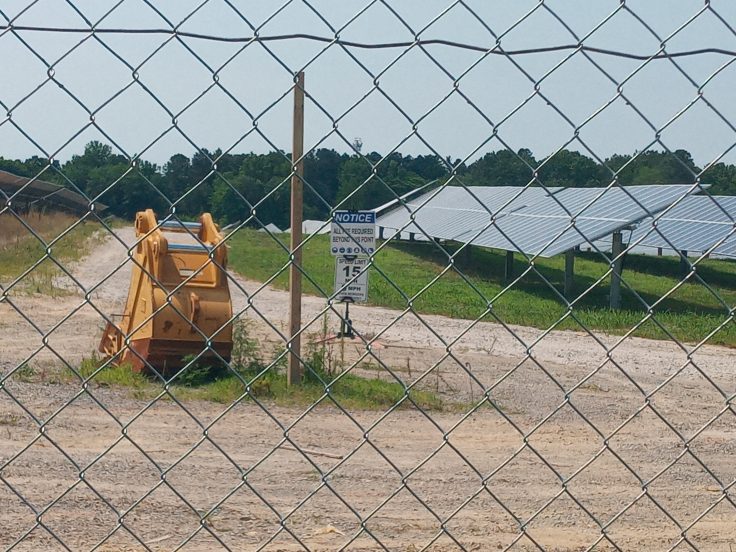Shortly after President Joe Biden offered tax credits to anyone buying solar panels, a Colorado homeowner named Stacie took out loans to install $30,000 worth of panels on her roof. Nearly six months later, however, those panels sat unused, generating no power.
The problem seemed to have a simple fix: Stacie's energy provider merely needed to hook the panels up to its power grid—but there's no room.
Increased demand driven by Biden's green subsidies, combined with inadequate power grid capacity, has left thousands of green energy projects like Stacie's without power, rendering them useless. "When you put out $30,000, you sign loans, and don't have a working product, it's frustrating," Stacie told a local reporter. "There is no communication."
Stacie's predicament reflects a significant snag in Biden's green energy revolution. While the hundreds of billions of dollars in green energy spending allocated through the Inflation Reduction Act led to a flood of new wind and solar projects, America's antiquated power grid is not ready to accommodate them. Nearly 1,300 gigawatts worth of green energy projects, for example, are waiting to be connected to power, according to a recent Lawrence Berkeley National Laboratory report. The country's entire electric grid has an installed power capacity of just 1,250 gigawatts.
Biden's energy spending has come under scrutiny in recent weeks as forecasts show the climate initiatives in the Inflation Reduction Act may cost up to four times more than was originally predicted. The inflated price tag makes the idea that the United States would manage to double the capacity of its power grid unlikely in the near future.
That capacity problem has led to massive power connection backlogs, frustrating developers and everyday consumers alike. At the end of 2022, more than 10,000 energy projects—most of them solar—were waiting for permission to connect to grids, the Berkeley report shows. The nation's largest grid operator, PJM Interconnection, in April announced a two-year suspension on the review of more than 1,000 solar projects waiting to connect to power. Developers now wait four years on average to receive connection approval, prompting many to give up and withdraw from the queue. In one case, energy provider Xcel told a Minnesota customer it would take 15 years to connect a rooftop solar system to the company's grid.
Even those who are approved are not necessarily in the clear. Some developers have seen their projects greenlit only to learn that their local grid is at capacity, forcing them to spend big on grid upgrades.
Biden's Bipartisan Infrastructure Law does include money for grid upgrades—the Democrat's Energy Department in November announced "$13 billion in new financing opportunities for the expansion and modernization of the nation's electric grid." But preparing the nation's power grid for Biden's green energy transition will likely take much more money than that. California alone, for example, must spend a whopping $9.3 billion on power grid upgrades to support its transition to green energy, the nonprofit that operates the state's electric grid revealed in April.
Daniel Turner, the founder and executive director of energy advocacy group Power the Future, hammered Biden for spending "billions of dollars in green cash without proper planning." The nation's power grid problem, Turner argued, shows that the government's work to spur the green energy market is unwise.
"Government comes in with these solar mandates and then they're surprised that the power grid isn't ready for those mandates," Turner told the Washington Free Beacon. "There's never been a Walmart that opens and then the manager goes, 'Holy cow, our shelves aren't stocked.' Government is constantly interfering with what the free market does best."
The Energy Department did not return a request for comment. The White House pointed the Free Beacon to a March speech from senior clean energy adviser John Podesta, who touted the administration's work to "accelerate transmission permitting." "We're doing what we can with the tools we have," Podesta said in the speech. "But Congress needs to do its job, too."
Inadequate power grid capacity is far from the only issue plaguing Biden's solar energy push. China dominates the solar industry supply chain, controlling more than 80 percent of the world's solar panel production. As a result, U.S. solar companies have turned to Chinese goods to satisfy the increased demand associated with Biden's green energy spending, a move that could cost them as bipartisan support grows in Congress for retroactive tariffs on Chinese solar panels. U.S. developers say those tariffs would cost them at least $1 billion in fees, prompting the solar industry to stress its need to import Chinese goods.
"The United States cannot produce enough solar panels and cells to meet demand," the Solar Energy Industries Association said in a Friday statement. "We are urging senators to see through this political charade and examine the facts at hand."
Biden has so far sided with his allies in the solar industry. The Democrat last summer suspended for two years tariffs on Chinese solar panels sold out of Southeast Asia, arguing that the tariffs would hurt "short-term solar panel supply." On Wednesday, however, a bipartisan group of senators voted to reinstate those tariffs, a vote that Florida Republican Rick Scott said "affirmed that the United States will never tolerate a hostile takeover of our industries." Biden promised to veto the measure in an April statement, which said the Chinese tariffs would hurt the "demand for reliable and clean energy" and "create deep uncertainty for jobs and investments in the solar supply chain and the solar installation market."
